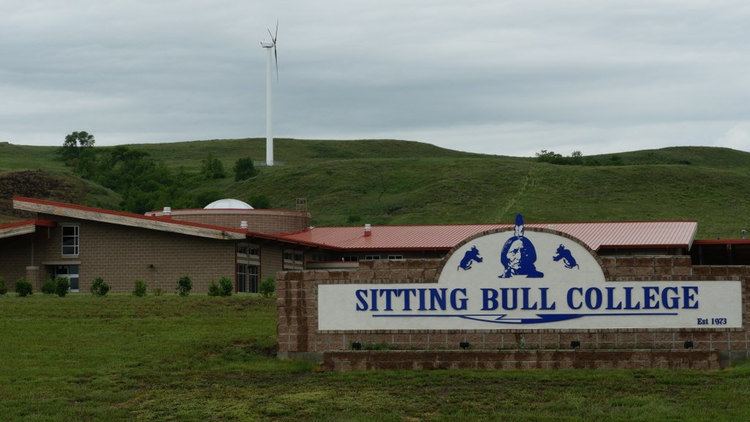Type Tribal College President Laurel Vermillion Undergraduates 300 Phone +1 701-854-8000 Graduation rate 10.5% (2014) | Established 1973 Vice-president Koreen Ressler Undergraduate tuition and fees 3,910 USD (2015) Founded 1973 | |
 | ||
Affiliation Similar Cankdeska Cikana Communi, Turtle Mountain Communi, United Tribes Technical, Nueta Hidatsa Sahnish, Sinte Gleska University Profiles | ||
The importance of lanugage sitting bull college s immersion nest
Sitting Bull College is a tribal college in Fort Yates, North Dakota. It was founded in 1973 by the Standing Rock Sioux tribe of the Standing Rock reservation in south-central North Dakota. The Standing Rock Indian Reservation consists of a land base of 2.8 million acres in North Dakota and South Dakota. The SBC campuses are located in Fort Yates, ND and McLaughlin, SD. It is one of 34 tribally controlled colleges nationwide. Sitting Bull College serves as the primary educational institution on the Standing Rock Reservation.
Contents
- The importance of lanugage sitting bull college s immersion nest
- Sitting bull college powwow participants getting ready
- History
- Mission Vision
- Programs
- Partnerships
- References
Sitting bull college powwow participants getting ready
History
In 1973, the Standing Rock Sioux Tribal Council chartered Standing Rock Community College. The College name was changed from Standing Rock College to Sitting Bull College in 1996.
Mission & Vision
Vision
Mission
Programs
Sitting Bull College offers the following Master of Science degrees:
Sitting Bull College offers the following Bachelor of Science degrees:
Sitting Bull College offers the following Associate of Arts degrees:
Sitting Bull College offers the following Associate of Science degrees:
Sitting Bull College offers the following Associate of Applied Science degrees:
Sitting Bull College offers the following Certificate of Completion:
Partnerships
SBC is a member of the American Indian Higher Education Consortium (AIHEC), which is a community of tribally and federally chartered institutions working to strengthen tribal nations and make a lasting difference in the lives of American Indians and Alaska Natives. SBC was created in response to the higher education needs of American Indians. SBC generally serves geographically isolated populations that have no other means accessing education beyond the high school level.
